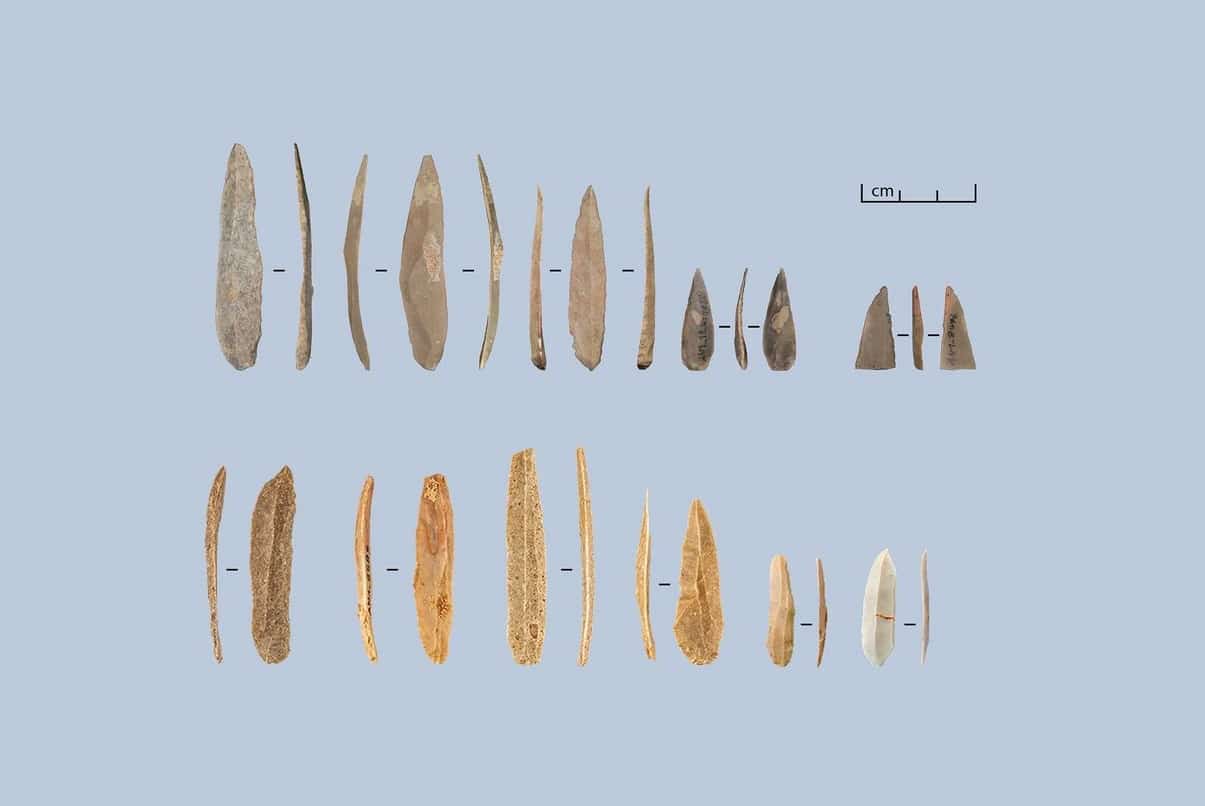Archaeologists have found that stone bladelets discovered at the Al-Ansab 1 archaeological site, suggests that a cultural and technological shift occurred in tool production 40,000-years-ago.
The Al-Ansab 1 is located in the Wadi Sabra, Jordan, providing one of the largest lithic assemblages of the Early Ahmarian Culture, a people that inhabited the Levant through to the Sinai Peninsula.
A typical tool found at Ahmarian sites is the el-Wad point, a blade or bladelet made of flint that has an additional, intentional modification, a so-called retouch. They are one of the widespread variants of shaped spear or arrow tips of the early Upper Palaeolithic.
An analysis of Ahmarian stone tools at Al-Ansab 1 shows that small elongated and symmetrical bladelets were mass produced, likely resulting from attempts to re-shape bigger, asymmetrical bladelet artefacts to reach quality standards of the unmodified bladelets, which are small, elongated and symmetrical.
The new findings show that, rather than being mere residual products, the small bladelets were central for the success of Homo sapiens during the Upper Palaeolithic. Being standardised and disposable, this flexible technology likely facilitated the successful dispersal of our species throughout Europe, as it allowed the groups to cover great distances in unknown territories without needing to rely on sources of big, good quality raw material.
This is the main result of the analysis carried out by Dr Jacopo Gennai, Marcel Schemmel and Professor Dr Jürgen Richter (Department of Prehistoric Archaeology, University of Cologne).
The authors propose that the southern Ahmarian had already fully completed the technological and cultural shift to the preferred use of small bladelets, used as spear or even arrow tips. The article “Pointing to the Ahmarian. Lithic Technology and the El‑Wad Points of Al‑Ansab 1” has been published in the Journal of Paleolithic Archaeology.
Header Image Credit : J. Gennai and M. Schemme







